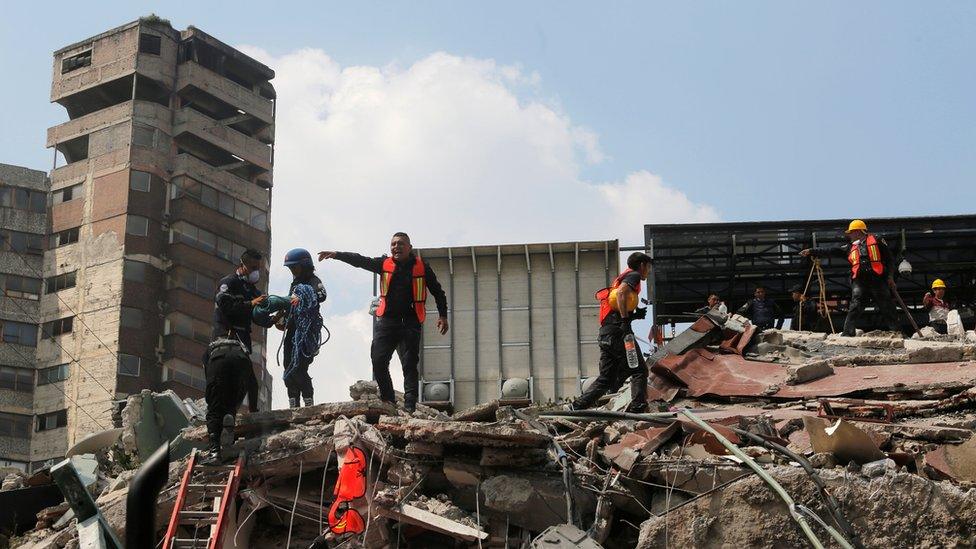Mexico's earthquake at street level: What one man saw
- Published
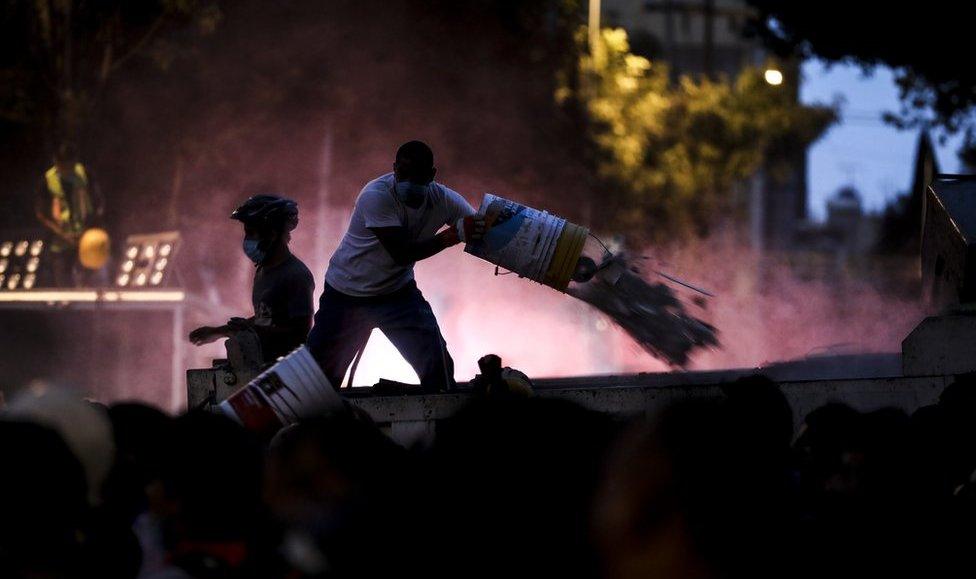
Photographer Clayton Conn took these pictures in Mexico City, his home since 2009.
His neighbourhood - Portales, in the borough of Benito Juárez - suffered gravely in Tuesday's earthquake, the most lethal tremor to hit Mexico in a generation.
"The area I live in was hit pretty hard, so a lot of the people - a lot of my neighbours are devastated."
This image shows the building two doors down from his apartment. It originally had five storeys.
"The two bottom floors have been completely collapsed," he says. "The neighbours said that there are people still inside. But the building was still sort of... kind of standing... From what I understand, people are still in there. And those neighbours, they couldn't touch the building. They fear it could continue collapsing."
Mr Conn was out with his girlfriend when the earthquake struck at 13:14 local time (18:14 GMT).
"I had my camera with me," he explains, "so we spent the day in the streets documenting, and also trying to get home."

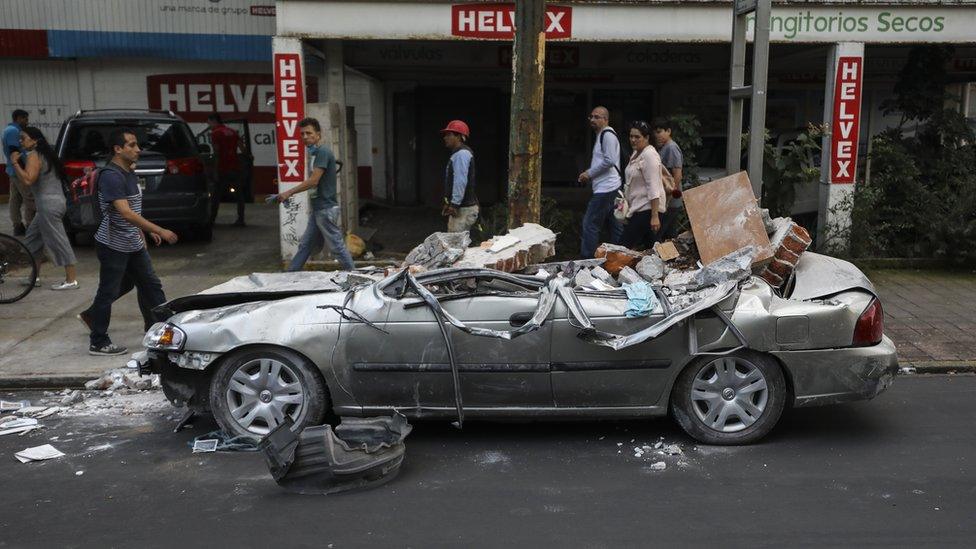
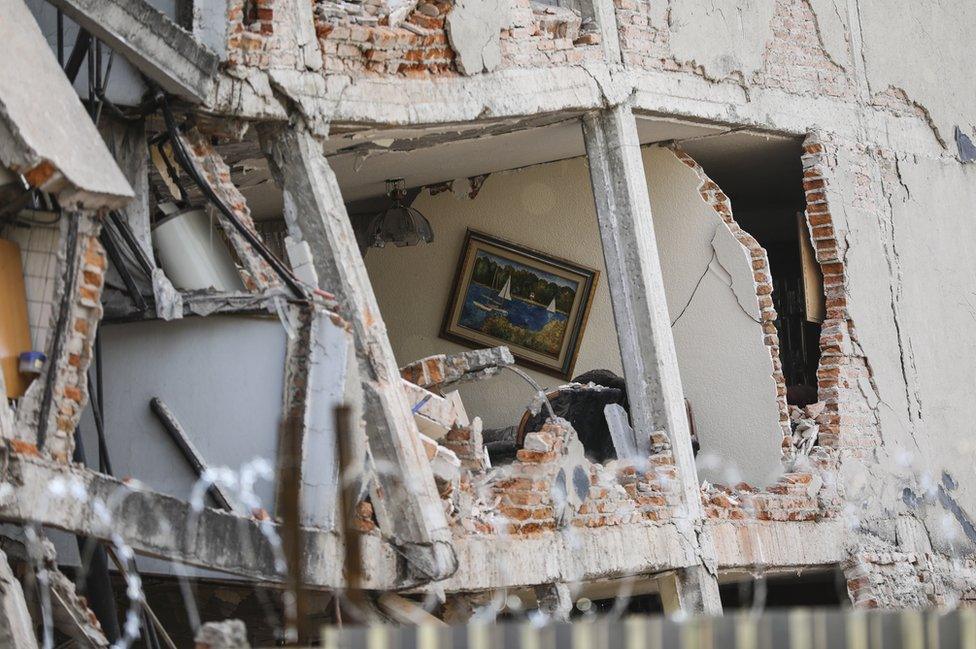
A couple of blocks away, he saw crowds of people staring across the rubble of another building, an eight or 10-storey apartment complex.
Neighbours wearing bicycle helmets for protection had joined the rescue effort alongside police and disaster relief workers.
"When they felt like there was a sign of someone, or they felt movement or that someone could be trapped down there, they would raise their fists - and that's the signal.
"So everyone - a crowd of a thousand people - immediately raise their fists, and there's almost complete silence. You can just hear the generators from the vehicle they've brought in to shine light. You couldn't hear a thing. In that silence, they can try to communicate with anyone who is trapped below."
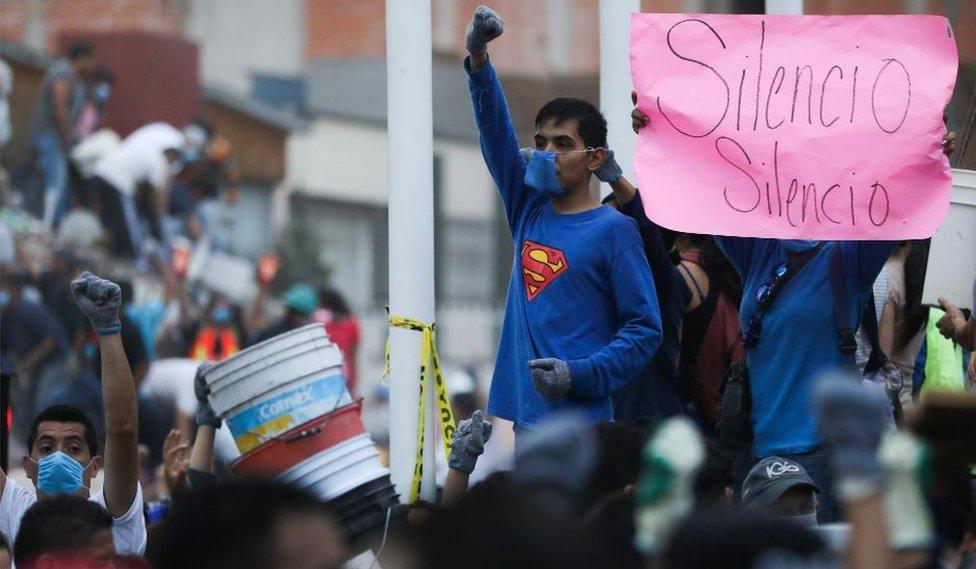
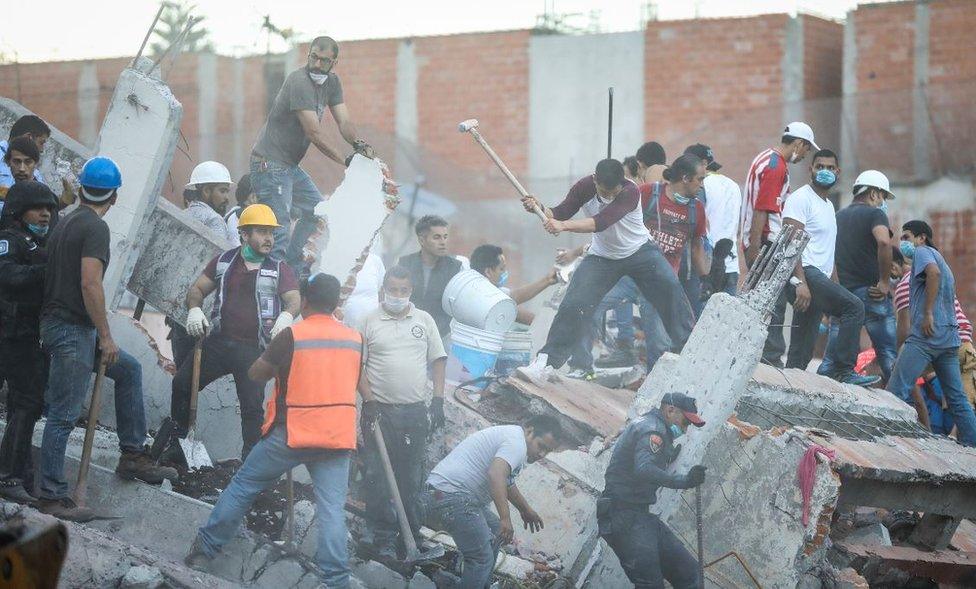
"A lot of people at first didn't realise the extent of the damage, so at first people were sort of joking in parks, and other areas where you're supposed to congregate when this occurs, to be safe.
"Once people started to realise that this was much more serious than maybe a small earthquake - because in Mexico City we feel earthquakes very frequently - some that are strong... A lot of people were in a state of shock - but a lot of people were reacting in a very heartening way.
"People were grabbing stuff from their houses, their offices, and just mobilising themselves.
"Within 20 minutes of the earthquake I was seeing people who looked like office workers carrying shovels and pickaxes - I have no idea where they got them from!
"A lot of people wearing their button-up shirts and pants - and a lot of younger people, artists, student types, running around with their shovels."

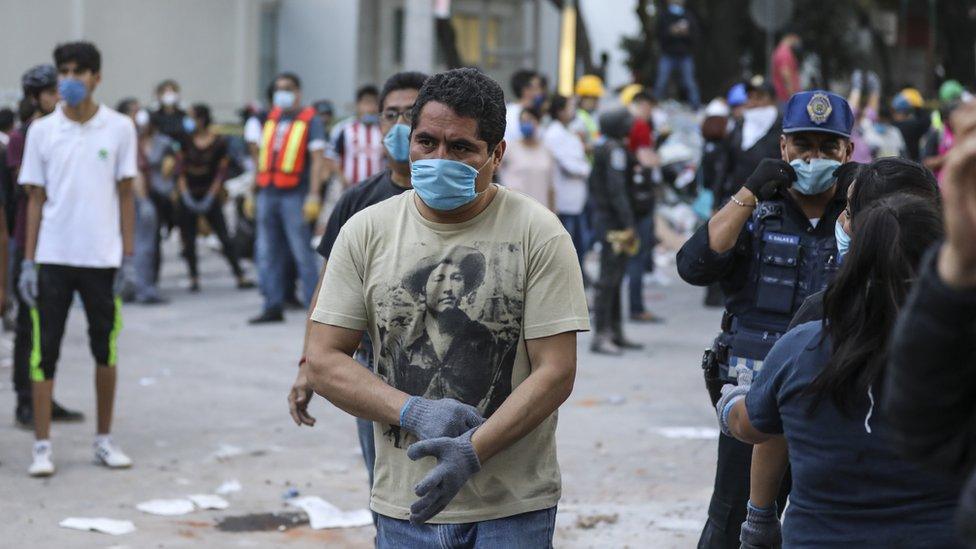
"The authorities weren't able to immediately attend all the places that were affected, all the buildings. There's not enough rescue teams. So there was a degree of shock and nervousness, but also - that sense of empathy that was really strong as well.
"People were handing out food... it was a really hot day.
"I only saw one woman that started crying. I saw lots of people with sad faces, but also faces that were not completely overwhelmed.
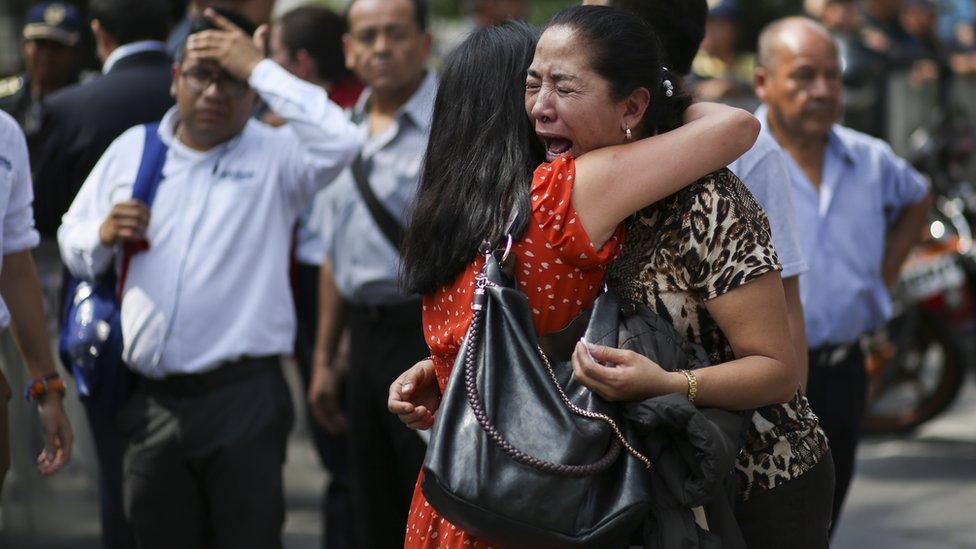
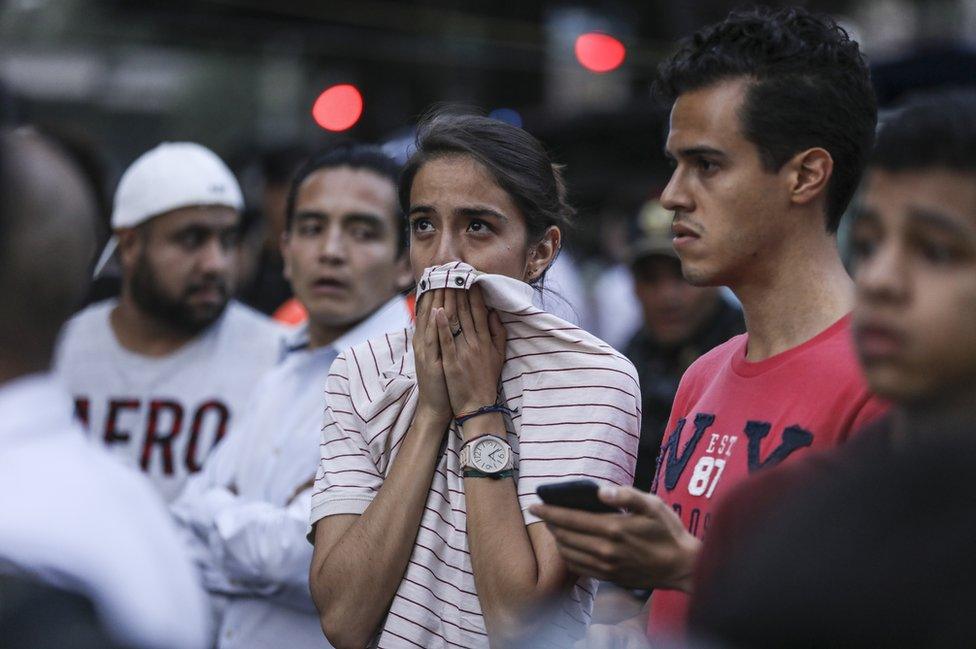
The new earthquake struck on the 32nd anniversary of a magnitude 8 quake that killed up to 10,000 people and left 30,000 others injured.
That 1985 tremor caused serious damage to Mexico City and its surrounding areas, with more than 400 buildings collapsed and thousands more damaged.
Every year, the authorities carry out earthquake drills as part of the commemoration. The photographer says they were held 40 minutes to an hour before the real-life disaster.
"There's an alarm that goes off - an earthquake alarm. It's pretty effective. It gives you, usually, about 40 seconds to a minute of heads-up...
"You hear this dramatic alarm and you leave the building. But yesterday [when the real quake hit], the alarm didn't go off immediately - it went off midway through the earthquake.
"That might have caught a lot of people off guard."
This picture shows troops from the Mexican military, who mobilise in response to natural disasters - be it a hurricane or an earthquake.
The yellow armband signifies that that they're responding to an event, and providing aid to possible victims.
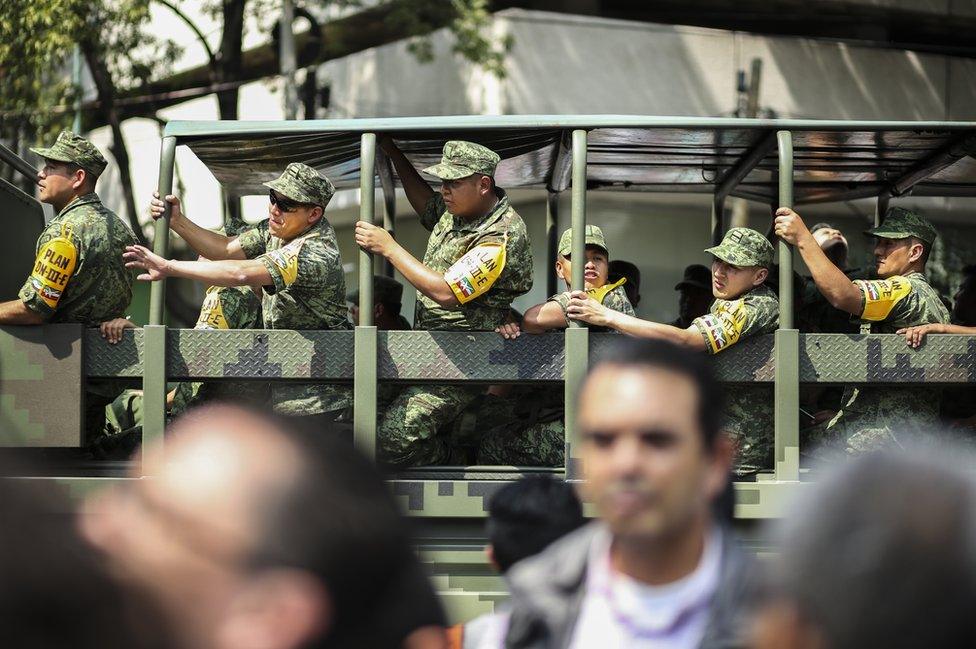
All pictures copyrighted.
- Published20 September 2017
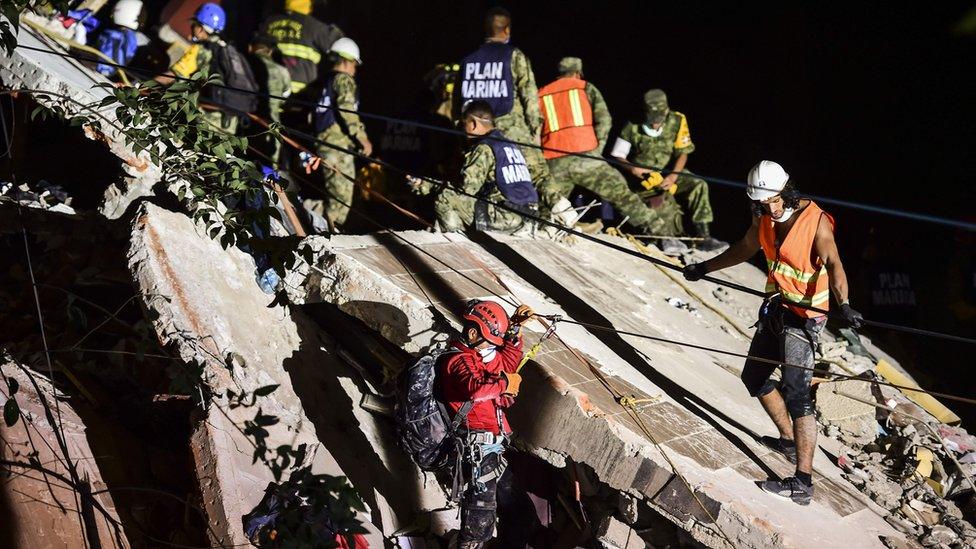
- Published20 September 2017
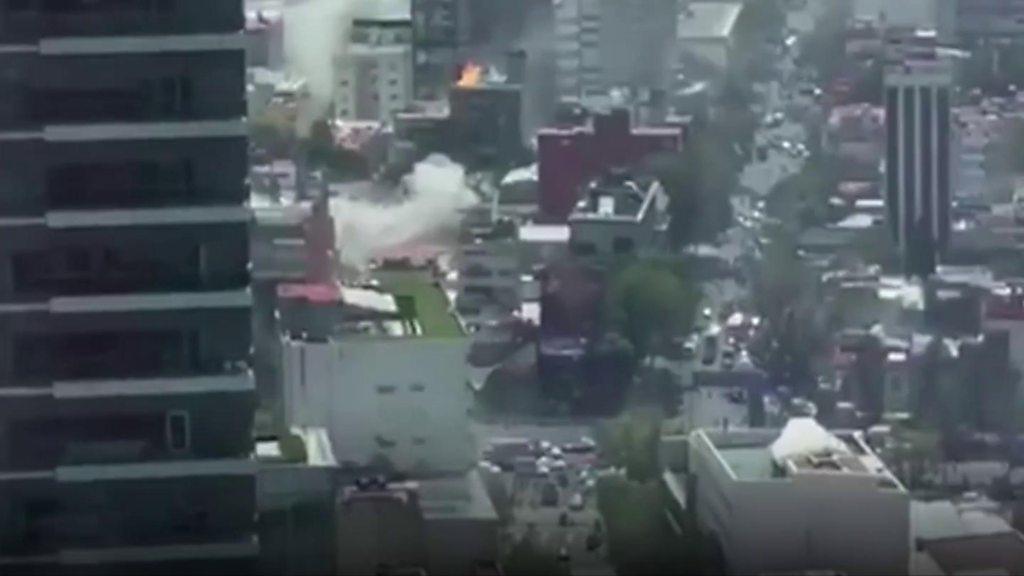
- Published20 September 2017
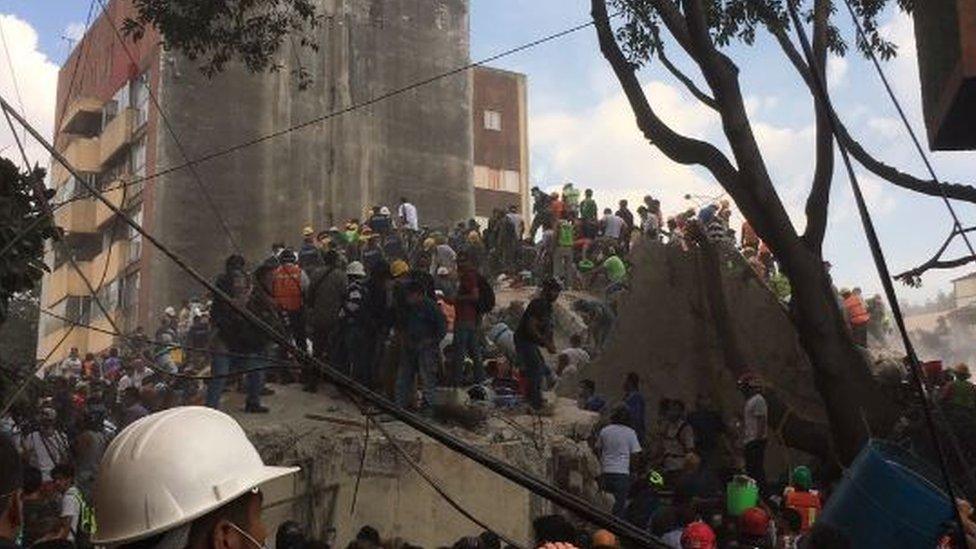
- Published22 June 2022

- Published11 May 2011
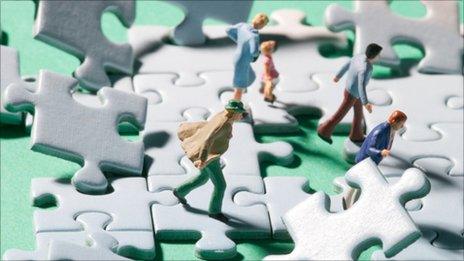
- Published19 September 2017

- Published20 September 2017
- Published20 September 2017
